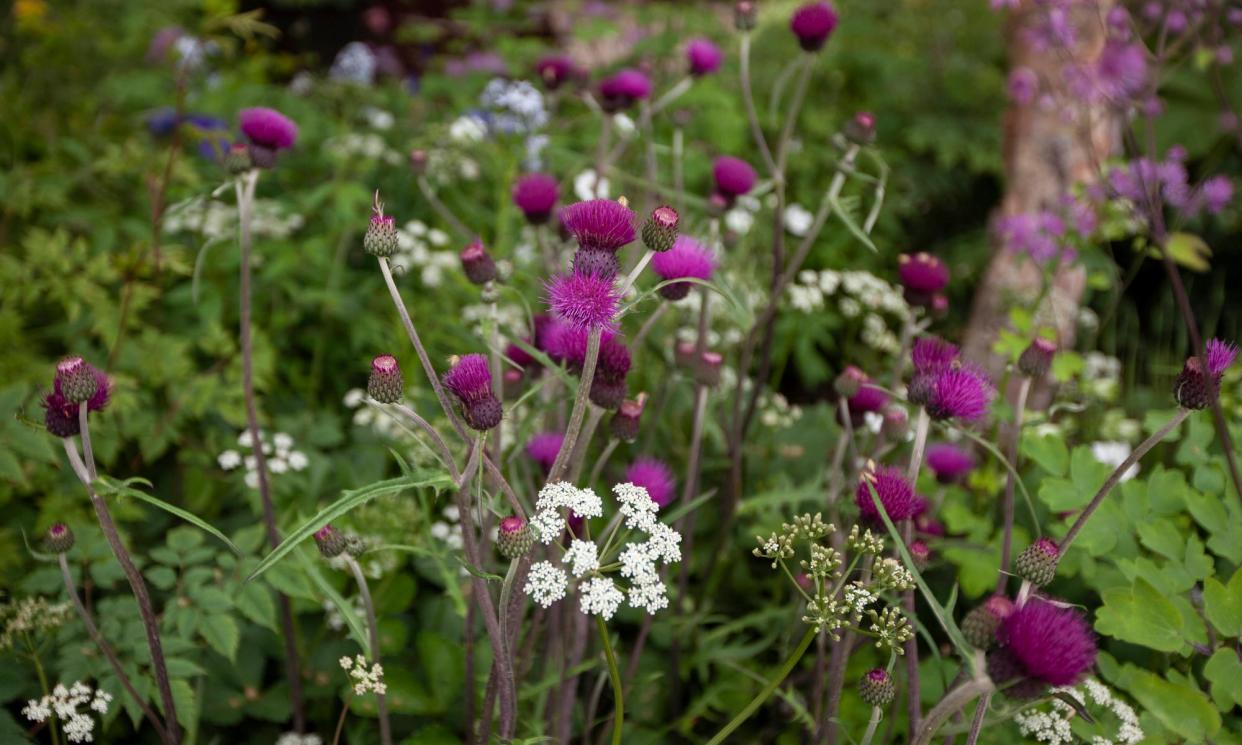Chelsea flower show to introduce green medal to award eco-friendly gardens

A green medal for sustainability is to be introduced at the Chelsea flower show, rewarding gardens with the lowest carbon impact.
Landscape designers are reporting that clients are commissioning them to make their gardens more wildlife-rich and eco-friendly, and that nature-friendly gardening is becoming increasingly important.
According to the Office for National Statistics, there are 521,872 hectares (1.2m acres) of private garden in Great Britain, which could provide a significant boost to the nation’s biodiversity if everyone were to tend their flowerbeds in a more sustainable way.
To promote this, the Royal Horticultural Society (RHS) is adding to its list of gold, silver-gilt, silver and bronze medals a new green award for the Chelsea show in west London. In common with the bronze medal, the green prize will not be a physical award, and it will be able to be conferred alongside the other medals.
Chelsea has also for the first time commissioned a carbon audit of its planned gardens in a move to reduce emissions. Design changes implemented as a result of gardens going through the new audit process reduced the carbon impact of the installations by 28%. All designers who have gone through the carbon audit are eligible for consideration for the green award.
The audit found that the most carbon-intensive aspect of creating a show garden is the building materials, so many horticulturalists have redesigned their projects to remove substances such as concrete and are using recycled objects.
Related: Rain gardens and bathwater reuse becoming trends, RHS says
Naomi Slade and Ed Barsley designed the Flood Resilient Garden, and are using reclaimed wood for their decking, as well as reclaimed rocks and pebbles for pathways, while the Freedom from Torture Garden by John Warland and Emma O’Connell is making most of its structures from willow. In the Stroke Association’s Garden for Recovery, by Miria Harris, the walls will be built with hempcrete blocks and use lime instead of cement.
Of the flood-resilient garden, Slade and Barsley said: “The key theme is water management. Dense planting slows the flow, while water is also captured and stored for later use. After heavy rain, the elevated deck and mound provide both habitable places for people and well-drained soil for the plants that need it, and these high points are linked by a dramatic bridge over a central swale.”
In the World Child Cancer Nurturing Garden, the designer Giulio Giorgi has made raised beds using 3D-printed clay blocks to reduce the garden’s environmental footprint. They are designed to fit together like a Lego-block system and require no concrete or chemical glues in their assembly. All plants in the garden will be from the UK and will be planted in peatless soil.
The gardeners Sophie Parmenter and Dido Milne are using plant dyes instead of paint to colour the aluminium trays and lights featured in their garden.
Sarah Poll, the head of shows development at the RHS, said: ‘We have introduced this new award in order to recognise and celebrate the fantastic ways designers and contractors are embracing the need to reduce their impact on the environment. The RHS has a responsibility to take a leading role in encouraging everyone to progress and drive environmental innovation and collaborate with the industry to make positive, sustainable changes.”
• Chelsea flower show will be held in the Royal Hospital Gardens from 21 to 25 May


